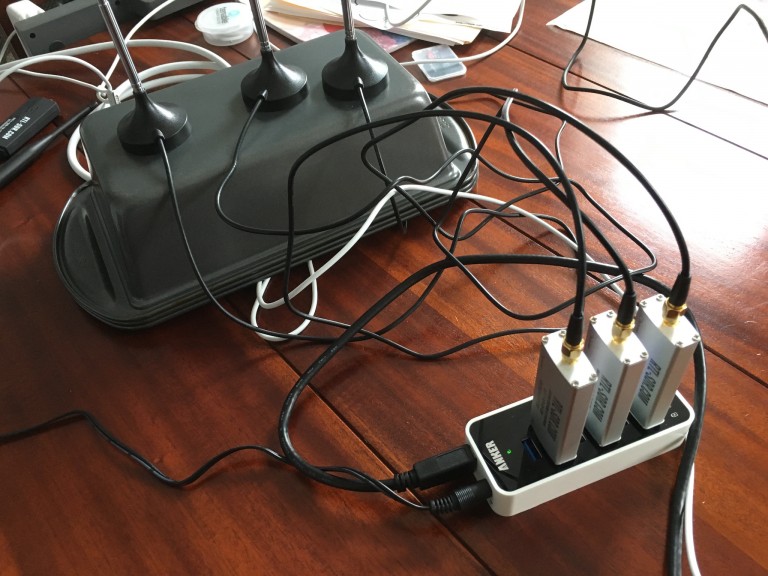Using Multiple RTL-SDR’s to Capture a Trunking System
An RTL-SDR dongle has a maximum usable bandwidth of about 2.4 MHz which most often isn’t enough to capture an entire trunking system that may be spread out over a larger bandwidth. In order to get around this limitation Luke Brendt has been using three RTL-SDR dongles together to capture a trunking system in his area which is spread over 6 MHz of bandwidth.
Luke uses his own Trunk Recorder software and writes that he has modified it to support multiple SDR’s. His software has the following description:
Trunk Recorder is able to record the calls on a trunked radio system. It uses 1 or more Software Defined Radios (SDRs) to do. The SDRs capture large swatches of RF and then use software to process what was recieved. GNURadio is used to do this processing and provides lots of convienent RF blocks that can be pieced together to do complex RF processing. Right now it can only record one Trunked System at a time.
- Trunk Recorder currently supports the following:
- P25 & SmartNet Trunking Systems
- SDRs that use the OsmoSDR source ( HackRF, RTL – TV Dongles, BladeRF, and more)
- Ettus USRP
- P25 Phase 1 & Analog voice
Luke also mentions that using three RTL-SDRs like this seems to be more efficient on the CPU than using a single SDR that has 8 MHz of bandwidth due to the amount of down sampling that needs to be done on larger bandwidth SDRs.
When I was using a single SDR, each Recorder had to take in the full 8MHz and pull out the small 12.5KHz that was interesting. The end results is that I could only record about 3 channels at once before the CPU got overloaded. Since that control channel was going at the same time, that was the equivalent of about 32MHz of bandwidth to process.
With the RTL-SDR, each Recorder only has to look at 2MHz, which puts a lot lighter load on the CPU. Roughly speaking, having 3 Recorders active, plus the control channel would mean that only a total of 8MHz was being processed. As you can see, this means that it scales much more efficiently.

So what are the advantages of using TrunkRecorder over, say, using 2 rtl-sdr dongles with UniTrunker and DSD+?
I’ve used that setup before — one dongle monitoring the control frequency and the other switching frequency to capture the conversation.
I have to admit that the reception was kind of crummy, but that was because I lived in an “intermod alley” and was only using the stock magmount antennas.
Is the difference that TrunkRecorder lets you follow multiple conversations on the same trunked system? That seems to be the upshot of processing a large amount of bandwidth simultaneously. But I may be mistaken.
For starters, trunk-recorder is Linux-based instead of Windows.